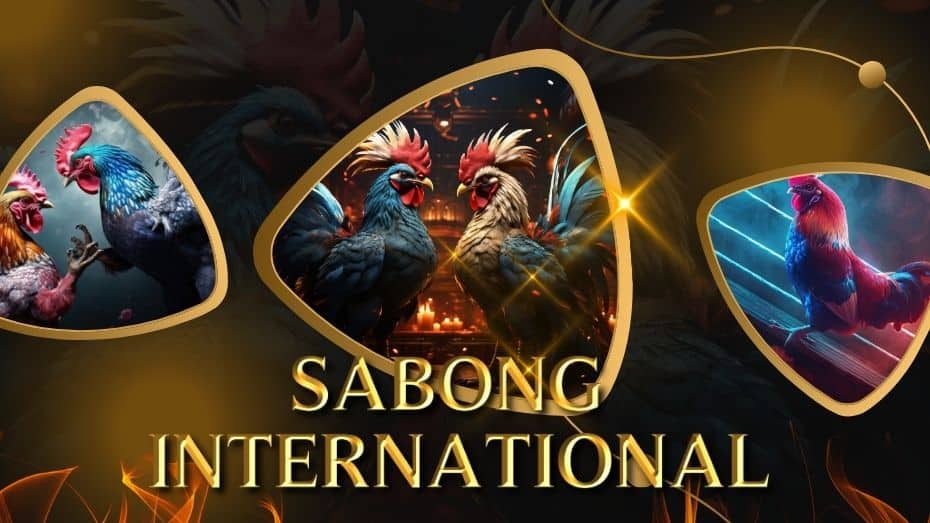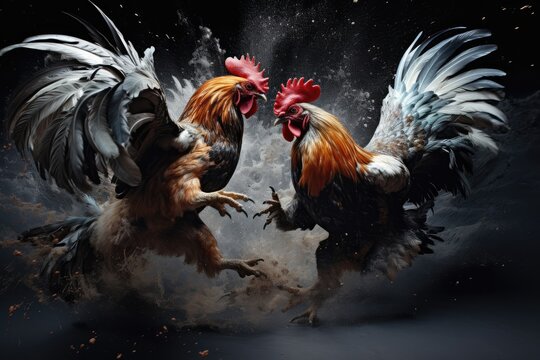Insights from a Sabong Grandmaster: Tips for Aspiring Cockfighters
Insights from a Sabong Grandmaster: Tips for Aspiring Cockfighters
Blog Article
Keys of the Sabong Grandmaster: Grasping the Art of Cockfighting
The complex globe of cockfighting, particularly as exercised by the Sabong Grandmaster, uses an interesting study in the convergence of animal behavior, training methods, and competitive approach. To genuinely understand the subtleties of this art type, one need to check out how the Grandmaster harmonizes the emotional and physical elements of rooster training while browsing the moral factors to consider inherent in this conventional practice.
Background of Cockfighting

As the centuries progressed, cockfighting spread throughout various continents, adjusting to social dynamics and regional customizeds. In medieval Europe, it gained popularity amongst the nobility, who regarded it as a display screen of riches and status. By the 17th century, the sport had established itself in England, bring about the development of defined guidelines and policies.
In the Americas, especially in the Caribbean and the Philippines, cockfighting tackled special qualities affected by native techniques and early american backgrounds. Today, while the sport continues to be debatable and faces lawful challenges in numerous regions, its historical importance remains to stimulate conversations about animal rights, social heritage, and social values. The advancement of cockfighting shows wider styles of human communication with nature and the complexities of custom.
Comprehending Fowl Behavior
Understanding fowl habits is vital for those involved in the sport of cockfighting, as it straight affects efficiency, wellness, and training. Fowls show a variety of behaviors that can indicate their mental and physical states. Significantly, aggressiveness, territoriality, and social pecking order play significant roles in their behavior.
Hostility is a natural reaction in roosters, mainly driven by the need to assert prominence. Observing communications among roosters can expose their position, which is essential for managing their atmosphere. A confident rooster presents a much more assertive position, while a submissive one might show signs of stress or worry, such as crouching or avoiding eye call.

Training Strategies for Champions
Efficient training techniques are vital for creating champion roosters that stand out in the competitive field of cockfighting. A systematic technique makes sure that each bird reaches its complete potential, integrating physical conditioning with mental determination.
To begin, developing a regular training routine is important - Sabong Grandmaster. This includes day-to-day workouts that enhance stamina, agility, and endurance. Routines might involve regulated sparring sessions with both artificial and real-time challengers to mimic competitors, permitting roosters to develop their fighting abilities in a safe atmosphere
Incorporating dexterity drills, such as challenge training courses and leaping workouts, considerably improves a rooster's physical use this link abilities. Furthermore, presenting different surfaces and terrains can boost their versatility throughout fights.
Psychological training ought to not be ignored. Familiarizing the birds with the noises and sights of an affordable environment can decrease stress and anxiety and stress and anxiety on fight day. Moreover, positive reinforcement techniques, such as fulfilling desirable behaviors, can instill self-confidence in the roosters.
Finally, preserving a calm and assertive presence during training sessions promotes trust in between the trainer and the fowl, necessary for achieving optimal performance. With each other, these methods form an extensive training program that grows champs ready to master the sector.
Health and Nourishment Basics

Including a mix of wheat, barley, and corn offers essential carbs, while protein resources such as fish dish, soybean dish, or insects sustain muscular tissue growth and healing. In addition, integrating fresh vegetables and fruits can boost the overall dietary account, supplying antioxidants that increase the body immune system.
Hydration is equally crucial. Accessibility to clean, fresh water must be a concern, as dehydration can drastically impact performance (Sabong Grandmaster). Routine health check-ups are crucial to keep track of for any potential health problems or bloodsuckers that might jeopardize a rooster's problem
Moreover, the timing of feed is essential. Supplying nourishment at suitable periods makes sure that roosters preserve power levels throughout their training and recovery phases. By concentrating on these health and his response wellness and nutrition basics, sabong enthusiasts can aid their roosters accomplish ideal performance in the competitive arena.
Strategies for Effective Matches
Success in cockfighting rest on a combination of calculated preparation and in-ring methods. Effective suit approaches start long before the battle, with mindful option of the fowl. Breeders must here are the findings prioritize hereditary characteristics such as hostility, durability, and endurance, ensuring that the selected bird demonstrates a solid lineage of efficiency.
Training is essential; roosters ought to be conditioned via a routine that includes workout, competing with various other birds, and exposure to different environments. This prep work not just constructs stamina but also improves the bird's adaptability to various challengers.
Throughout the match, a trainer must employ eager observation and quick decision-making. Identifying the opponent's methods permits prompt adjustments, such as shifting the fowl's position or encouraging extra aggressive habits. When to motivate or restrain the bird can mean the difference between success and defeat., timing is critical; knowing.
Last but not least, preserving a tranquil disposition during matches promotes self-confidence in the rooster. A well balanced strategy, combining both physical and mental readiness, inevitably brings about effective end results in the field, showing that mastery in cockfighting is as much regarding technique as it has to do with the birds themselves.
Final Thought
The mastery of cockfighting, as exhibited by the Sabong Grandmaster, hinges on a comprehensive understanding of fowl behavior, effective training techniques, and optimal health and wellness and nutrition. Ultimately, the tricks of the Sabong Grandmaster lie in the unified balance of these aspects, ensuring the continued tradition of this ancient sport.
To genuinely comprehend the subtleties of this art form, one must explore exactly how the Grandmaster integrates the emotional and physical elements of fowl training while browsing the moral considerations inherent in this traditional method.Recognizing rooster habits is important for those entailed in the sporting activity of cockfighting, as it straight influences performance, training, and health.Keeping ideal wellness and nourishment is vital for making sure that fowls reach peak efficiency in the cockfighting sector. Offering nutrition at appropriate periods guarantees that fowls keep power degrees throughout their training and recuperation phases.The proficiency of cockfighting, as exhibited by the Sabong Grandmaster, pivots on a thorough understanding of rooster behavior, efficient training strategies, and optimum wellness and nourishment.
Report this page